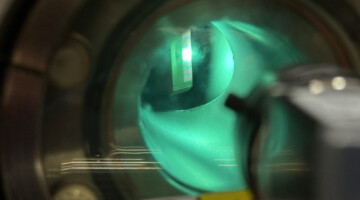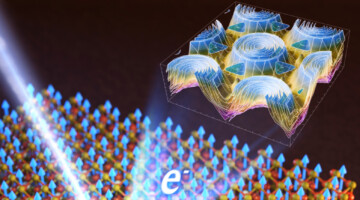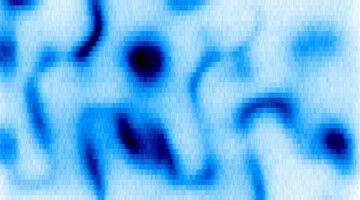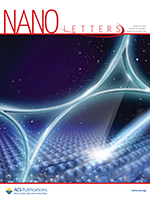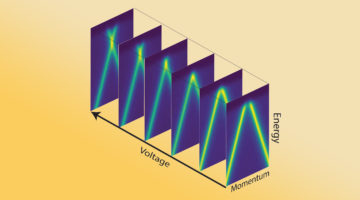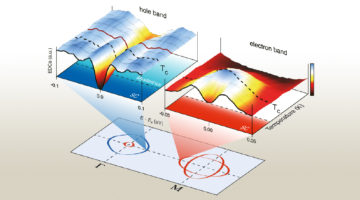The strontium ruthenate family has a perovskite-like structure that can assemble into different configurations, offering an ideal way to study how the physics change as the material goes from 3D to 2D. In this study, researchers revealed how electrons with different spins behave in distinct layers of a three-layer magnetic material. The results deepen the field’s understanding of how magnetism emerges in layered materials, an important concept for future magnetic technologies and quantum electronic devices. Read more »![]()
![]()
Strategic ALS Projects Reach Key Milestones
Thanks to the hard work and dedication of multidisciplinary teams from groups across the ALS, a spate of important milestones occurred over the past month, for projects involving the new QERLIN beamline, the MERLIN beamline upgrade, and a new chamber for computer-chip metrology in Sector 12. Read more »
Room-Temperature 2D Magnet: Electronic-Structure Insights
Researchers found that small changes in how electron spins interact with each other can make a big difference in the magnetic transition temperatures of 2D magnets. Understanding such factors can help create better magnetic materials for information storage, sensors, medical imaging, and energy-efficient computing. Read more »![]()
![]()
Chiral Twists and Turns Lead Way to New Materials
Researchers found that, in crystals with structural chirality (left- or right-handedness), tuning the electronic behavior reveals hidden chiral phases and singularities. The results provide a new way to predict, test, and manipulate novel materials that exhibit desirable properties for next-generation electronic and spintronic devices. Read more »![]()
![]()
A 2D Electron Liquid Floats on a Crystal Surface
Researchers discovered a liquid-like layer of electrons that floats on the surface of an unusual crystal and appears to undergo a phase transition upon doping. The system is an ideal platform for studying exotic phenomena involving electrons (e.g. superconductivity) without complications arising from other types of interactions. Read more »![]()
![]()
Copper Migrates to Surface of Topological Insulator in Air
An ambient-pressure study of a topological insulator doped with copper revealed that the copper atoms, inserted between the material’s layers, migrate to the surface when exposed to air. The work represents a novel way of modifying the material’s surface composition, which can confer it with new properties such as superconductivity. Read more »
Dirac Nodal Line in Hourglass Semimetal Nb3SiTe6
Hourglass fermion in an electronic band structure is protected by the nonsymmorphic symmetry of a layered semimetal Nb3SiTe6. Angle-resolved photoemission spectroscopy demonstrates the band features of an hourglass fermion in k-space, such as band crossings and nodal loops. Read more »
What Drives Electron–Hole Asymmetry in Graphene?
Using the ALS, researchers determined that interactions between electrons are what give rise to the divergent effects observed when graphene is doped with electrons versus holes. A better understanding of this electron–hole asymmetry could lead to new avenues for generating exotic material phases, including unconventional superconductivity. Read more »![]()
![]()
Scientists Uncover Surprising New Clues to Exotic Superconductors’ Superpowers
Researchers studied a model material (CeCoIn5) that mimics a cuprate superconductor that can be switched on and off using high magnetic fields. In chemical compositions where the superconductivity is strongest, the number of free electrons jumps, signifying a transition point. The researchers attributed this transition to the behavior of electrons associated with the cerium atoms. Read more »
Interlayer Coupling Drives Mysterious Phase Transition
Researchers found that a mysterious phase transition in an iron-based superconductor is driven by interactions between the material’s 2D layers. The results counter the assumption that interlayer coupling is negligible in such materials, suggesting instead that the interactions can be an effective way to tune superconductivity. Read more »![]()
![]()

